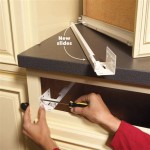Whether you are installing a new kitchen sink or replacing existing fixtures, a kitchen sink locknut is a crucial component that must be installed properly. A kitchen sink locknut is a specially designed nut with a rubber gasket that creates a watertight seal between the sink and the tailpiece. Without it, the connection between the sink and the drainpipe can become loose, leading to water leakage.
How to Install a Kitchen Sink Locknut
Installing a kitchen sink locknut is a simple process that anyone can do. The most important thing to remember is to make sure the locknut is properly sized for the tailpiece. Here are the steps to install the locknut:
- Fit the locknut over the tailpiece. Make sure the rubber gasket is in place and that it is properly seated.
- Tighten the locknut with a wrench until it is snug. Make sure not to overtighten, as this can cause damage to the tailpiece.
- Connect the sink to the tailpiece and make sure it is securely fastened.
- Check the connection for any water leakage.
Types of Kitchen Sink Locknuts
There are several different types of kitchen sink locknuts available. The most common types are metal locknuts, plastic locknuts, and rubber-sealed locknuts. Each type has its own benefits and drawbacks, so it’s important to choose the right one for your application.
- Metal Locknuts: Metal locknuts are the most durable and reliable option, but they are also the most expensive. They are also the most difficult to install.
- Plastic Locknuts: Plastic locknuts are less expensive than metal locknuts, but they are not as durable. They are also easier to install.
- Rubber-Sealed Locknuts: Rubber-sealed locknuts are the least expensive option, but they are not as reliable as metal or plastic locknuts. They are also easier to install.
Tips for Installing Kitchen Sink Locknuts
Installing a kitchen sink locknut is a simple process, but there are a few tips to keep in mind to ensure a successful installation:
- Make sure the locknut is the correct size for the tailpiece.
- Tighten the locknut with a wrench, but don’t overtighten.
- Check for water leakage after installation.
- Clean the area around the locknut before installation.
Conclusion
Installing a kitchen sink locknut is an important part of any kitchen sink installation or replacement. With the right tools and a little bit of know-how, anyone can install a kitchen sink locknut. Just remember to use the right type of locknut, make sure it is the correct size, and don’t overtighten it. Following these tips will help ensure a successful installation.















Related Posts








